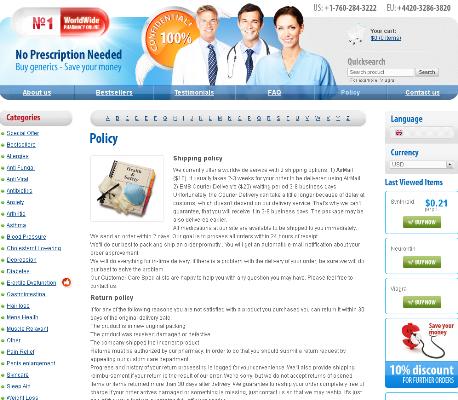Lasix for Heart Failure: What Patients Should Know
Understanding How Lasix Works in the Body
Imagine your heart is struggling to pump efficiently, leading to fluid build-up in your body—this is where Lasix steps in. As a type of diuretic, also known as a "water pill," Lasix helps your kidneys remove excess salt and water from your bloodstream. By doing so, it reduces the amount of fluid circulating in your blood vessels and tissues, easing the workload on your heart.
Lasix specifically acts on a part of the kidneys called the loop of Henle. There, it blocks the reabsorption of sodium and chloride, which means more water is drawn out and expelled through urine. This action leads to noticeable symptom relief, such as decreased swelling in the ankles and reduced shortness of breath.
| Lasix Effect | Patient Benefit |
|---|---|
| Reduces fluid overload | Less swelling, easier breathing |
| Lowers blood pressure | Protects heart and blood vessels |
Why Lasix Is Commonly Prescribed for Heart Failure

Living with heart failure often means your heart struggles to pump fluid efficiently throughout your body. When this happens, excess fluid can build up in your lungs, legs, or abdomen, leading to uncomfortable symptoms like swelling and shortness of breath. This is where lasix comes into play as a trusted ally for many patients.
Lasix, a type of diuretic or “water pill,” helps your body get rid of this extra fluid by increasing urination. By reducing fluid overload, it can provide significant relief and make it easier for your heart to do its job. Patients often notice improved breathing and less swelling in their daily lives, making routine activities more manageable.
Doctors favor lasix not only because it effectively reduces symptoms but also because it can prevent hospitalization associated with worsening heart failure. Used as part of a comprehensive treatment plan, lasix plays a vital role in supporting patient comfort and heart health.
Key Benefits Patients Experience with Lasix
For many patients dealing with heart failure, lasix can offer a sense of relief and renewed energy. As excess fluid builds up in the body, daily activities may become difficult due to swelling or shortness of breath. Taking lasix helps the body eliminate this extra fluid, allowing the heart to pump more efficiently and reducing pressure on vital organs.
By promoting swift removal of water through increased urination, lasix often brings noticeable improvements within days. Many people report less swelling in their legs and ankles and feel more comfortable lying down at night. This translates to improved mobility and easier breathing, dramatically enhancing daily quality of life.
Additionally, maintaining proper fluid balance with lasix can lessen the likelihood of hospitalization caused by fluid overload episodes. The ability to manage symptoms at home is empowering for many, helping them regain a sense of control over their health.
Potential Side Effects You Should Watch Out for

When beginning lasix, many patients are surprised by how suddenly their bathroom visits increase. This diuretic helps reduce swelling and fluid buildup, but it can also lead to dehydration if you’re not careful. Low blood pressure is another possible effect, sometimes making you feel dizzy or lightheaded, especially when standing up.
Some people using lasix may notice muscle cramps or weakness, often due to changes in electrolyte levels—like potassium and sodium. Staying in close contact with your doctor helps catch these shifts early on.
Rarely, patients could experience ringing in the ears or changes in hearing. Since side effects are often subtle at first, staying alert to new symptoms and promptly discussing them with your healthcare team ensures your treatment continues to be both effective and safe.
Tips for Taking Lasix Safely and Effectively
Taking lasix as prescribed is key to managing heart failure effectively and avoiding complications. Always take your dose at the same time each day, preferably in the morning to reduce nighttime trips to the bathroom. Staying well-hydrated and keeping a record of your weight can help detect fluid retention early. Remember, never stop lasix suddenly without talking to your doctor, as this can worsen symptoms.
| Action | Why It Matters |
|---|---|
| Monitor weight daily | Detects fluid build-up early |
| Take medication in the morning | Reduces sleep disturbances |
| Stay hydrated | Prevents dehydration and kidney issues |
Frequently Asked Questions about Lasix Use
Many people have questions about taking Lasix, especially when it's prescribed for a condition as serious as heart failure. One of the most common concerns is whether Lasix can interact with other medications or supplements. It's crucial to discuss all your medicines, including over-the-counter products, with your healthcare provider to avoid any dangerous interactions or reduced effectiveness. Patients often wonder how quickly Lasix will work or how long its effects will last; typically, the medication begins working within an hour, prompting increased urination and fluid loss for several hours.
Questions about what foods or drinks to avoid also come up frequently. Since Lasix can affect your body’s potassium and sodium levels, your doctor might recommend dietary changes or suggest regular blood tests to monitor your electrolytes. Additionally, understanding what to do if a dose is missed or if side effects appear can help you feel more prepared and confident in your treatment plan.
<

